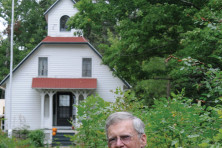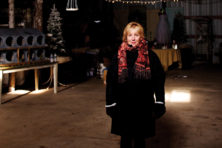Commentary: My Father Is Still Teaching Me About Generosity
- Share
- Tweet
- Pin
- Share

Every year the Door County Community Foundation presents an event called Preview Door County for our friends in Southwest Florida. From our vibrant arts community to our wonderful music, to those who steward and protect our environment treasures, the goal of Preview Door County is to remind our seasonal residents that so much of what they love about our peninsula is inextricably intertwined with the world of charity. We don’t often think of it this way, but charity provides much of the reason people come to Door County and it’s what keeps them coming back year after year. These nonprofit organizations are essential to our quality of life and are an indispensable part of the economic engine of our community.
This year’s Preview Door County took place in Bonita Springs, Florida, on March 15. As I stood before the crowd to offer a few comments, I couldn’t help but reflect upon the fact that this day was the third anniversary of my father’s passing. I wrote about him in the Peninsula Pulse in 2013 in a piece titled “The Man Who Taught Me About Generosity.”
I shared with our Florida friends that Dad had died just a few days short of his 90th birthday. If a son believes he is going to live as long as his father, then sometime early last year I entered the second half of my life. There is no ceremony or tradition to mark this transition, yet life’s blessings can arrive in the most unexpected of ways.
The Community Foundation is about to launch an initiative about growing older in Door County. Hence, a colleague recently gave me a copy of a book by Richard Rohr titled Falling Upward: A Spirituality for the Two Halves of Life. I told the crowd in Florida that while my friend and colleague could not have known of my personal milestone, the serendipity of this message gave me great pause.
The book’s basic premise is that the arc of a healthy life has two distinct phases. In the first half of our existence, we are building what Rohr calls our “container.” We spend our time trying to answer some of the most fundamental questions about ourselves. How can I support myself? Who will go with me? What makes me significant? During this first half of our life how we appear to ourselves and the world around us are almost the only questions we consider.
If we’ve managed to answer these fundamental questions well, as we grow older eventually we become restless and find that our old agenda is no longer sufficient. Few experience a light that shines from above, a sudden epiphany, or a spark of inspiration. Rather, we move forward naturally, and almost imperceptibility, turning from constructing the container that is our self to the task of deciding how we will fill it.
In the first half of our life, we define our identity by differentiating ourselves from those around us. In the second half of our existence, we look for the things we share in common. We find happiness in compatibility. We don’t dwell on differences or exaggerate problems. Creating unnecessary drama has become tedious and boring.
As I looked around the crowd at Preview Door County in Florida, I noted that I was surrounded by those who have been enormously successful in the first half of their lives. They have built containers that are robust and distinctive. Yet as I’ve gotten to know many a person in that room over recent years, I’ve seen firsthand how they now spend their time filling their containers with something deeper and more meaningful.
Rohr describes people like these as “human works of art.” These good souls aid and influence others not because of the titles they hold, or the power they wield, but rather simply by being who they are. He writes that in the second half of life, we know that we are all in this together and that we are equally naked underneath our clothes.
My father showed me how to live a generous life. He was more than a good man, he was my teacher. Although my teacher is gone now, his grace remains with me, and the clarity of his teachings is just beginning to take deeper root.
While I slowly enter this second half of my life, Rohr’s writings are helping me understand what my father meant. As we grow older, eventually we recognize that it’s good just to be a part of the dance. We don’t have to stand out, make flashy moves, or be better than anyone else on the dance floor. If you’ve answered those container questions about yourself when you were younger, you no longer feel the need to define or explain who you are. Life becomes more participatory than assertive.
I have so much more to learn about generosity, but I’m beginning to understand that this was what my father was trying to teach me.
Every year in Florida, and really all around Door County, I preach the same message to anyone who will listen. I remind you of how important it is that you give back to the charities of our community. I say how much all of you mean to Door County.
What I’m beginning to understand is how much Door County means to all of you. Charitable giving, at every level, allows us to be a part of a community. It gives us a chance to join with others who understand our dreams, feel our passion, and share our vision for how we want our community to be.
Being generous with others is our opportunity to be a part of the dance.
Bret Bicoy is president & CEO of the Door County Community Foundation. Contact him at [email protected].



